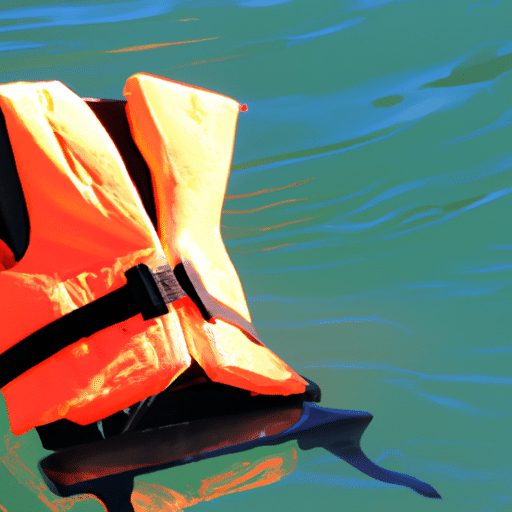Ready to hit the waves on a thrilling jet ski adventure? Look no further than our essential tips for jet skiing safely. In this article, we will guide you through everything you need to know to have a fun and secure jet ski experience. From understanding the basics of operating a jet ski to practicing proper safety measures, we’ve got you covered. So, hop on board and let’s make your jet skiing adventure as exciting as it is safe!
Choosing the Right Equipment
Selecting a Reliable Jet Ski
When it comes to enjoying a thrilling ride on the water, choosing the right jet ski is crucial. With so many options available, it’s important to select a reliable and trustworthy brand. Research different jet ski manufacturers to find one with a reputation for producing high-quality and durable watercraft. Take into consideration factors such as horsepower, weight, and size to ensure the jet ski meets your specific needs and preferences. Reading customer reviews and seeking recommendations from experienced riders can also be helpful in making the right choice.
Understanding Jet Ski Features
To fully enjoy your jet ski experience, it’s essential to have a good understanding of the various features that come with the watercraft. Familiarize yourself with the throttle, steering system, and braking mechanism. Take note of any additional features such as a reverse function, boarding platform, or storage space. Having a thorough understanding of these features will not only enhance your safety but also significantly improve your overall riding experience.
Ensuring Personal Safety
Wearing a Properly Fitted Life Jacket
As safety should always be a top priority when engaging in any water activities, it’s crucial to wear a properly fitted life jacket. Life jackets are designed to keep you afloat in case of an emergency, and choosing the right size and fit is essential. Ensure the life jacket fits snugly around your body and allows for proper mobility. Remember, wearing a life jacket is not only important for novice riders but also for experienced jet ski enthusiasts.
Using Protective Gear
In addition to a life jacket, wearing protective gear is vital for your safety. Invest in a well-fitting wetsuit or rash guard to protect your skin from sunburn and abrasions. Don’t forget to wear appropriate footwear, such as water shoes or neoprene boots, to provide traction and prevent potential injuries. It’s also a good idea to consider wearing impact-resistant gloves, goggles, and a helmet for added protection.
Applying Sunscreen
Spending hours on a jet ski means being exposed to the sun’s harmful UV rays. To protect your skin from sunburn and potential long-term damage, apply a waterproof sunscreen with a high SPF rating before heading out on the water. Remember to reapply regularly, especially after spending time in the water or sweating excessively. Sunburn can not only be painful but also ruin your jet ski adventure.
Maintaining Hydration Levels
While riding a jet ski, it’s easy to forget about staying hydrated, but it is essential for your well-being. Riding under the sun and engaging in physical activity can lead to dehydration, which can result in fatigue, dizziness, and even heatstroke. Make sure to bring plenty of water with you and drink regularly to maintain your hydration levels. Opt for a hydration pack or a securely lidded water bottle that can be easily accessed while on the move.
Learning the Rules and Regulations
Obtaining and Understanding Local Laws
Before embarking on your jet ski adventure, it is vital to familiarize yourself with the local laws and regulations governing personal watercraft use. Check with your local authorities or marine enforcement agency to obtain the necessary information. Pay attention to age restrictions, licensing requirements, and any specific rules regarding speed limits, no-wake zones, and restricted areas. Abiding by these laws ensures not only your safety but also promotes respectful and responsible jet ski usage.
Adhering to Speed Restrictions
Speed restrictions exist for a reason – to ensure the safety of both riders and others enjoying the water. It’s important to adhere to these limits, especially in crowded areas or near beaches. Operating your jet ski at excessive speeds can be dangerous, leading to loss of control, collisions, or injury. Always be aware of your surroundings and adjust your speed accordingly, keeping in mind any restrictions imposed by local authorities.
Respecting No-Wake Zones
No-wake zones are designated areas where boaters and jet ski riders are required to operate their watercraft at low speeds to minimize the wake disturbance. These zones are essential for the safety of other boaters, swimmers, and wildlife in the area. It is crucial to respect and adhere to these zones, maintain a slow and controlled speed, and avoid any reckless or unnecessary maneuvers. By doing so, you not only protect others but also maintain a positive reputation for the jet ski community.
Avoiding Reckless Maneuvers
While the thrill of riding a jet ski can be exhilarating, it’s important to remember that safety should always take precedence. Avoid performing reckless maneuvers such as sharp turns, sudden stops, or abrupt acceleration. Not only can these actions endanger yourself and others, but they may also result in damage to your jet ski or even injury. Show respect for the water, other watercraft, and fellow riders by practicing responsible riding and avoiding any unnecessary risks.
Mastering Basic Jet Ski Techniques
Mounting and Dismounting with Care
Properly mounting and dismounting your jet ski is crucial for your safety, as well as the preservation of the watercraft. Approach the jet ski from the side, maintaining a balanced stance, and carefully step onto the footwells. Avoid jumping or landing heavily on the watercraft, as this can cause instability and potential damage. When dismounting, do so from a seated position, ensuring a smooth exit from the jet ski.
Maintaining Proper Posture
Maintaining the correct posture while riding a jet ski is essential for balance, control, and overall safety. Keep your knees slightly bent, allowing for shock absorption and improved stability. Lean forward slightly, keeping your weight centered, and hold onto the handlebars firmly. Proper posture will help you ride more comfortably, navigate turns smoothly, and react quickly in case of any unexpected situations.
Starting and Stopping Smoothly
Starting and stopping your jet ski smoothly is crucial to avoid sudden jerks or loss of control. Familiarize yourself with the starting procedures specific to your watercraft model, ensuring that the engine is properly primed and running smoothly. When coming to a stop, gradually decrease the throttle and apply gentle pressure on the brake lever if necessary. Practice these techniques in a safe environment to develop confidence and maintain a smooth ride.
Navigating Turns
Navigating turns on a jet ski requires proper technique to maintain control and stability. Approach turns at an appropriate speed, gradually reducing throttle as you enter the turn. Shift your weight to the inside of the turn, leaning with the jet ski to maintain balance. Use the handlebars to guide the jet ski smoothly through the turn, avoiding sudden movements. Practice turning in both directions to become comfortable with different maneuvering scenarios.
Slowing Down and Stopping Safely
Slowing down and stopping safely is essential for maintaining control and avoiding collisions. Gradually reduce your speed by releasing the throttle, allowing the watercraft to decelerate naturally. If needed, gently apply the brake lever to aid in slowing down. When coming to a complete stop, keep your weight centered and maintain balance. Practice proper slowing down and stopping techniques to ensure safe navigation in different situations.
Being Mindful of Surroundings
Maintaining a Safe Distance from Other Watercraft
Sharing the water with other watercraft requires being aware of your surroundings and maintaining a safe distance to prevent collisions. Always keep a sufficient distance from other boats, kayaks, or paddleboards to avoid potential accidents. Be mindful of the wake produced by larger vessels and adjust your position accordingly to ensure a smooth and safe ride. Remember, maintaining a safe distance promotes a friendly and respectful environment on the water.
Watching for Swimmers and Wildlife
Being aware of swimmers and wildlife is crucial for their safety as well as your own. Keep a vigilant eye out for swimmers and maintain a safe distance to avoid any potential accidents. Wildlife can also be present in the water, such as birds, turtles, or even dolphins. Admire them from a distance, avoiding any unnecessary disturbance or deliberate approach. Respecting the presence of swimmers and wildlife ensures a harmonious coexistence and a positive jet skiing experience for everyone.
Avoiding Dangerous Obstacles
When navigating through unfamiliar waters, it’s essential to keep an eye out for dangerous obstacles. These can include rocks, submerged logs, shallow areas, or floating debris. Pay attention to navigational aids, such as markers or buoys, which can provide valuable information about safe routes. By avoiding dangerous obstacles, you prevent damage to the jet ski and reduce the risk of accidents or injuries.
Being Aware of Weather Conditions
Weather conditions can significantly impact your jet ski experience. Keep a close watch on weather forecasts before heading out and be prepared for any changes in conditions. High winds, thunderstorms, or rough waters can make riding dangerous and should be avoided. Additionally, familiarize yourself with the signs of changing weather while on the water and have a plan in place to seek shelter if necessary. Being aware of weather conditions is crucial for your safety and ensures an enjoyable jet skiing adventure.
Communication and Signals
Using Hand Signals
Clear communication on the water is essential for maintaining a safe and enjoyable riding experience. Hand signals are a universal language that can help convey your intentions to other riders or boaters. Familiarize yourself with common hand signals, such as signaling a turn, requesting a stop, or alerting others to potential hazards. By using hand signals effectively, you can enhance communication and minimize any misunderstandings or potential accidents.
Understanding Standard Jet Ski Signals
In addition to hand signals, understanding and utilizing standard jet ski signals is crucial for effective communication. These signals are commonly used among riders to indicate specific actions or situations. For example, flashing headlights may signal a request to pass, while raising one hand may indicate a problem or emergency. Make sure to familiarize yourself with these signals and be prepared to use them when necessary to ensure clear communication while on the water.
Communicating Intentions to Others
Good communication with fellow riders and boaters helps ensure a safe and enjoyable jet ski experience for everyone. Whenever possible, communicate your intentions to others, especially when approaching or passing other watercraft. Use verbal cues, hand signals, or standard jet ski signals to indicate your actions or potential course changes. By effectively communicating your intentions, you minimize the risk of accidents and create a helpful and cooperative atmosphere on the water.
Dealing with Emergencies
Knowing How to Perform a Rescue
In emergency situations, knowing how to perform a rescue can be instrumental in ensuring the safety of yourself and others. Familiarize yourself with basic rescue techniques, such as performing a tow or assisting a distressed swimmer. Understanding how to properly approach and handle these situations can make a significant difference in the outcome. It’s also crucial to remember to prioritize your own safety and seek professional help if needed.
Responding to Equipment Malfunctions
Even with proper maintenance, equipment malfunctions can occur. Being prepared to handle these situations is essential for maintaining your safety on the water. Familiarize yourself with troubleshooting techniques specific to your jet ski model, such as restarting the engine or resolving throttle issues. If you’re unable to resolve the problem, it’s best to discontinue riding and seek professional assistance to prevent further damage or risking your safety.
Handling Inclement Weather Situations
Sudden changes in weather conditions can be unpredictable and pose significant risks to riders. If you find yourself caught in inclement weather, it’s important to take immediate action to ensure your safety. Seek shelter in a protected area or return to shore if possible. Avoid open waters or areas susceptible to strong winds and currents. Stay informed about weather conditions and take appropriate precautions, such as always carrying a personal flotation device (PFD) and communication devices.
Seeking Professional Help When Needed
Sometimes, situations arise that require professional assistance to ensure your safety. If you encounter an emergency or find yourself in a challenging situation, don’t hesitate to seek help from the appropriate authorities or rescue services. Reporting incidents promptly and accurately can help ensure a fast and effective response. Remember, your well-being is of utmost importance, and asking for professional assistance when needed is the responsible course of action.
Maintaining Jet Ski Safety
Regularly Inspecting the Jet Ski
Regular inspections are essential for maintaining the safety and performance of your jet ski. Before each ride, thoroughly inspect the watercraft for any signs of damage, wear, or loose parts. Check the fuel and oil levels, ensure all control cables are properly connected, and test the engine and electrical systems. By performing regular inspections, you can identify and address any issues promptly, reducing the risk of breakdowns or accidents while on the water.
Performing Basic Maintenance
Proper maintenance is vital for the longevity and safety of your jet ski. This includes routine tasks such as changing the oil, cleaning the watercraft, and lubricating moving parts as recommended by the manufacturer. Additionally, check the spark plugs, fuel filter, and battery regularly to ensure they are in good working condition. Following the manufacturer’s maintenance schedule and guidelines will help keep your jet ski in optimal shape and reduce the likelihood of unexpected malfunctions.
Storing the Jet Ski Properly
Proper storage is crucial for keeping your jet ski safe and protecting it from damage when not in use. If you don’t have access to a designated storage facility, ensure the watercraft is kept in a dry, secure area away from direct sunlight. Store it with a cover to protect it from dust and debris. If possible, elevate the jet ski on a cradle or stands to prevent hull damage. Storing the jet ski properly will extend its lifespan and ensure it’s ready for your next adventure.
Learning from Jet Ski Professionals
Enrolling in Safety Courses
For riders looking to enhance their skills and knowledge, enrolling in safety courses is highly recommended. These courses provide valuable instruction on jet ski operation, navigation, safety protocols, and emergency procedures. Furthermore, they may offer hands-on training and guidance from experienced instructors. By enrolling in safety courses, you not only improve your safety awareness but also gain confidence in your abilities as a responsible jet ski rider.
Seeking Expert Advice and Training
To further expand your jet ski expertise, seek advice and training from experts in the field. Experienced riders, jet ski enthusiasts, and professionals in the industry can offer valuable insights and recommendations. Reach out to local jet ski clubs, rental companies, or watercraft dealerships to find resources and experts willing to share their knowledge. Engaging with seasoned professionals allows you to learn from their experiences and better understand advanced techniques and safety measures.
Keeping Up with Industry Updates
The jet ski industry is constantly evolving, and it’s important to stay informed about the latest updates, regulations, and safety advancements. Regularly check industry publications, websites, and forums to stay up-to-date on new technologies, safety standards, and best practices. Being aware of the latest trends and changes ensures you are equipped with the most current knowledge and can make informed decisions regarding your jet ski riding experience.
Respecting the Environment
Avoiding Polluting the Water
As responsible jet ski riders, it is our duty to protect the environment and avoid polluting the water. Ensure that your jet ski is properly maintained and doesn’t leak any fluids that could harm the waterways. Properly dispose of any trash or waste accumulated during your ride, and avoid throwing anything overboard. Additionally, be mindful of fuel spills or leaks when refueling and clean up any spills immediately. By practicing responsible fueling and waste management, we can preserve the beauty of our waterways for future generations.
Protecting Marine Life
Jet skiing can be a thrilling experience, but it’s important to share the water with marine life responsibly. Avoid areas known for their sensitive ecosystems or habitats, and steer clear of shallow areas where plant life might be at risk. Keep a safe distance from marine animals such as dolphins, turtles, or manatees, as close encounters can cause stress or harm. By respecting and protecting marine life, we contribute to the preservation of the fragile balance of our oceans and waterways.
Practicing Responsible Tourism
Jet skiing often takes place in tourist destinations, and it is essential to practice responsible tourism. Respect the local customs and culture, and be mindful of noise levels when operating your jet ski. Follow designated routes and stay within authorized areas to minimize disturbances to wildlife and other recreational activities. Support local conservation efforts and consider participating in beach cleanups or environmental initiatives. By practicing responsible tourism, we can foster a sustainable and harmonious relationship between jet skiing and the communities that host us.
In conclusion, jet skiing is an exhilarating water sport that can bring endless joy and adventure. However, it’s crucial to prioritize safety, respect, and responsibility while on the water. By choosing the right equipment, ensuring personal safety, learning the rules and regulations, mastering basic techniques, being mindful of surroundings, communicating effectively, dealing with emergencies, maintaining the jet ski properly, learning from professionals, and respecting the environment, we can enjoy this thrilling activity while minimizing risks, protecting ourselves, and preserving the beauty of our waterways. So get out there, have fun, and ride safely!





































